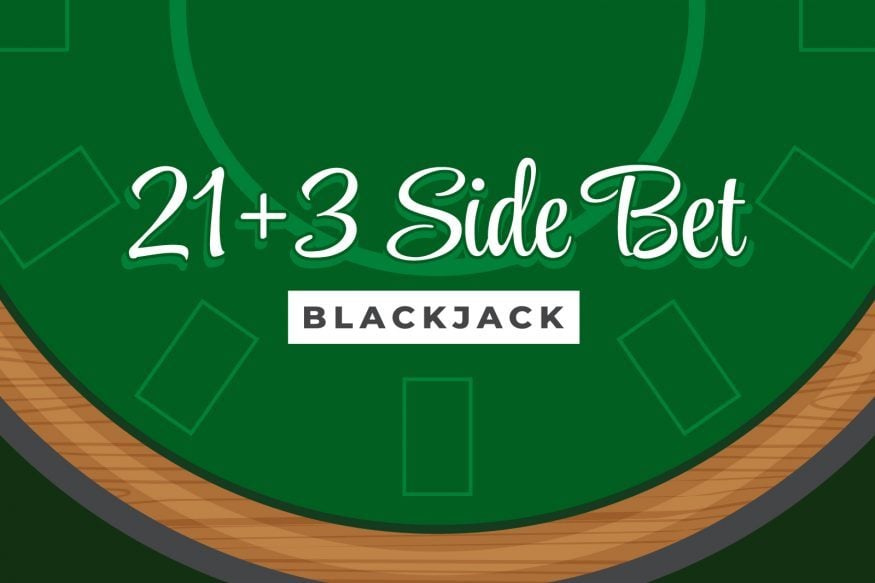Mastering the 21+3 Blackjack Side Bet: A Complete Guide

Introduction to the 21+3 Blackjack Side Bet
Since its debut in Las Vegas in 2001, the 21+3 side bet has become one of the most sought-after add-ons at blackjack tables worldwide. Whether you play at a traditional brick-and-mortar casino or enjoy blackjack online, chances are you’ve seen this popular wager offered alongside the standard game. For newcomers and seasoned players alike, understanding how this optional bet works-and how to maximize your chances-can add excitement and potentially bigger payouts to your blackjack sessions.
How the 21+3 Side Bet Works
The 21+3 side bet is straightforward to play. After placing your main blackjack bet, you have the option of making an additional wager in a specially marked area next to your primary bet. This side bet uses a combination of your first two cards and the dealer’s face-up card to make classic three-card poker hands.
You win the 21+3 side bet if these three cards create one of the following:
- Straight (three sequential values, e.g., 6-7-8)
- Flush (three cards of the same suit)
- Three of a Kind (all of the same rank)
Because of its simplicity and modest wagering amounts-typically starting at $1, although tables in Las Vegas often require $5-the 21+3 bet is accessible to most blackjack fans.
Understanding 21+3 Payout Structures
Originally, all qualifying hands in the 21+3 bet paid out at a fixed rate of 9 to 1. As casino gaming has expanded, operators have introduced various payout structures to attract more players and add diversity to the side bet.
Many online and live blackjack games now feature payout tables with higher rewards for rare hands. Here’s a look at two of the most common paytables encountered at modern casinos:
| Hand | IGT Paytable | Evolution Gaming Paytable |
|---|---|---|
| Suited Three of a Kind | 100 to 1 | 100 to 1 |
| Straight Flush | 35 to 1 | 40 to 1 |
| Three of a Kind | 33 to 1 | 30 to 1 |
| Straight | 10 to 1 | 10 to 1 |
| Flush | 5 to 1 | 5 to 1 |
Paytable variations like these affect the house edge, which typically ranges between around 3.6% and 4.2% depending on the specific payout structure and the number of decks in use.
Exploring Progressive and Related Side Bets
Some casinos have introduced progressive jackpots to the 21+3 format. For example, a hand like three suited aces might trigger a substantial progressive payout, sometimes giving the player an edge once the jackpot is high enough. Another common pairing is the “Top Three” side bet, which must be made alongside the 21+3 bet. This variant pays larger sums for rare hand combinations, such as:
- Three of a Kind: 90 to 1
- Straight Flush: 180 to 1
- Suited Three of a Kind: 270 to 1
Players receive both the 21+3 payout and extra winnings from the Top Three side bet if they hit the qualifying combinations. Keep in mind that while progressive and bonus bets can offer appealing jackpots, they usually increase the house edge if the progressive pool is low.
The Impact of Deck Count on Your Odds
The number of decks in play significantly affects your probability of winning the 21+3 bet. Unlike the main blackjack game, where more decks only slightly influence the house edge, the effect on the 21+3 bet is much more pronounced.
Here’s how the house advantage can change depending on deck count, based on the original Shufflemaster paytable:
| Decks in Play | House Edge (%) |
|---|---|
| 8 decks | 2.74 |
| 6 decks | 3.24 |
| 4 decks | 4.24 |
| 2 decks | 7.26 |
| 1 deck | 13.3 |
Playing on tables with more decks gives you a much lower house advantage and thus a better value. For the best odds, look for eight-deck games that pay a true 9 to 1 for all qualifying hands. If that’s not an option, seek the highest deck count and most favorable paytable available.
Is It Possible to Gain an Edge on the 21+3 Bet?
Some casino advantage players and mathematicians have explored methods to beat the 21+3 bet. Suit tracking-keeping count of which suits have been played-can theoretically provide a small advantage but demands complex mental calculations and offers only a tiny expected gain.
A more practical opportunity might arise in games featuring progressive jackpots. When the top prize grows large enough, it can push the math in the player’s favor. Astute players sometimes seek out tables with unusually high progressives for this reason. Conversely, a low progressive meter typically means a higher house edge, so always be cautious before wagering on these versions.
Why 21+3 Remains Popular
The enduring popularity of the 21+3 blackjack side bet comes down to its simplicity, relatively attractive odds compared to other side bets, and the extra thrill it adds to regular blackjack. For a modest wager, it gives players a chance at sizable payouts and gets the whole table involved, often creating a more social and energetic atmosphere. Unlike some alternative side bets, 21+3 is straightforward to understand and keeps the action moving.
Two decades after its creation, 21+3 has firmly established itself as a favorite, and it shows no sign of disappearing from casino floors or online platforms anytime soon.
Key Takeaways for 21+3 Players
- Look for games using the most decks possible-eight is ideal.
- Favor tables with traditional 9 to 1 payouts or the most player-friendly paytable available.
- Keep an eye on the size of any progressive jackpots, and approach them with strategy.
- Enjoy the game for its entertainment value, but always wager responsibly.
Whether you’re a seasoned card counter or a casual player looking to spice up your blackjack experience, the 21+3 side bet is an accessible, fun, and potentially rewarding addition to the classic game.













